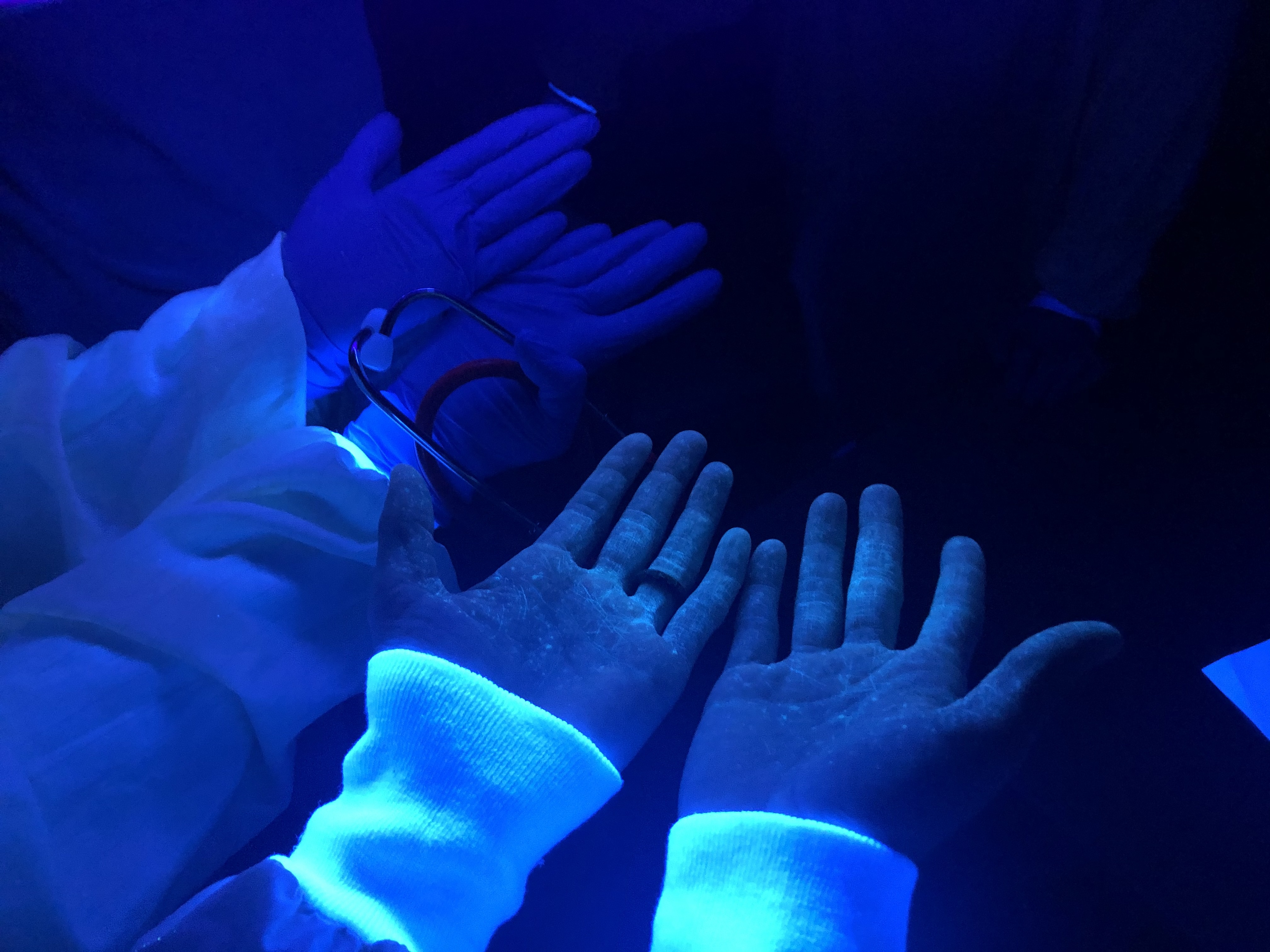When someone has a heart attack or a stroke, specialized care can give them the best chance of surviving.
Tag: Prevention
An aspirin a day? Poll of older adults suggests some who take it may be following outdated advice
One in four older adults take aspirin at least three times a week, mostly in hopes of preventing heart attacks and strokes, a new poll shows. But many people aged 50 to 80 who said they take aspirin may not need to because hey don’t have a history of cardiovascular disease.
Four years later, what do we know about COVID-19?
Four years ago, a brand new virus turned the world upside down. Today, we know more and can do more about the coronavirus called SARS-CoV2, and the disease called COVID-19, than ever before. A summary of the latest knowledge and guidance.
Prof. Dr. Thanyavee Puthanakit, National Outstanding Researcher in Medical Science, with Clinical Research on the Treatment and Prevention of HIV in Youth
Prof. Dr. Thanyavee expressed her appreciation and honor for receiving the Outstanding Researcher Award.
NIH grants support UCLA and Charles Drew University researchers’ efforts to end HIV epidemic
The National Institutes of Health (NIH) has granted $2.1 million to UCLA’s Center for HIV Identification, Prevention, and Treatment Services (CHIPTS) and the UCLA-CDU Center for AIDS Research (CFAR) to support four research projects and an implementation science consultation hub.
Young Adults’ Simultaneous Use of Alcohol and Marijuana Linked to More Drinking, More Negative Alcohol Consequences, and More Hours High
Up to one in four young adults use alcohol and marijuana simultaneously (i.e., use at the same time with overlapping effects), a behavior linked to a greater risk of adverse consequences. Given the expanding legalization of non-medical marijuana use, there is an urgent need to better understand the effects of simultaneous use and who is most vulnerable to adverse outcomes.
Merkel Cell Skin Cancer Expert Can Discuss Prevention and Diagnosis
On Friday, Jimmy Buffett passed away after fighting Merkel Cell Skin Cancer for four years. Merkel Cell Carcinoma is an aggressive form of skin cancer. While MCC is rare, cancer records indicate that more people are developing this skin cancer than…
An International Infectious Diseases Leader’s Reaction to the CDC Health Alert on Measles
The Centers for Disease Control and Prevention (CDC) is warning Americans to make sure they’re fully protected against the measles before traveling internationally this summer. The CDC issued a health alert and guidance on measles during the summer travel season. Dr.…
Among Young People, Being Around Peers May Elicit Greater Drinking Cravings than the Presence of Alcohol
The presence of peers is a key prompt for alcohol cravings among young people, according to a new study in Alcohol: Clinical & Experimental Research. When certain settings, people, or items—a bar, a friend, a glass—are paired with alcohol, they can become conditioned cues, eliciting drinking cravings. These learned reactions are associated with alcohol use disorder (AUD), treatment outcomes, and relapse. Adolescents and emerging adults are particularly susceptible to peer influence. In real-world settings, studies have found that the presence of peers predicts young people’s intensifying drinking cravings at the moment. In laboratory studies, however, peer influence is largely absent, potentially limiting the usefulness of their findings. Better understanding peers as alcohol cues could inform more effective AUD prevention and treatment programs. For the current study, researchers from Brown University, RI, evaluated alcohol cravings among youth in the human laboratory, using drinking-

UC San Diego Expert on Violence Assesses Police Brutality and Mass Shootings in America
Tage Rai is a psychologist and assistant professor of management at UC San Diego’s Rady School of Management who studies ethics and violence. He co-authored the book “Virtuous Violence” outlining research which finds that most acts of violence are driven by moral motives on the part of perpetrators. That is, perpetrators believe they are doing the right thing when they hurt and kill their victims. In this Q&A, Rai, who teaches negotiation at the Rady School, addresses dual crises impacting America—police brutality and gun violence—and what can be done to prevent them.
American Society of Nephrology Statement on U.S. Preventive Services Task Force Draft Research Plan on Screening for Kidney Diseases
The American Society of Nephrology (ASN) is encouraged by the recent U.S. Preventive Services Task Force (USPSTF) announcement to solicit comment on USPSTF’s draft research plan on screening for kidney diseases. This development follows more than a decade of advocacy in support of more kidney health screening by ASN and other stakeholders dedicated to intervening earlier to slow or stop the progression of kidney diseases.
Women with Elevated Breast Cancer Risk Could See Mortality Benefit from Estrogen-Blocking Drugs
While it has long been recognized that drugs that block the cancer-promoting activity of estrogen reduce risk of developing new breast cancers, a new computer modeling study led by researchers at Georgetown Lombardi Comprehensive Cancer Center and colleagues showed that these treatments could also reduce the risk of dying from the disease in women who are at high risk.
Few children affected by monkeypox so far – But risks are higher in children 8 or younger
Children aged 8 years or younger should be considered a group at high risk for more severe monkeypox disease, reports The Pediatric Infectious Disease Journal, the official journal of The European Society for Pediatric Infectious Diseases. The journal is published in the Lippincott portfolio by Wolters Kluwer.
High blood pressure speeds up mental decline, but does not fully explain dementia disparities
High blood pressure means faster slide into signs of dementia or Alzheimer’s, but does not explain the overall disparity between Hispanic/Latino people and non-Hispanic people in dementia risk.
MD Anderson celebrates World Cancer Research Day
The University of Texas MD Anderson Cancer Center again supports World Cancer Research Day, Sept. 24, and its goals to highlight the importance of cancer research, to promote scientific collaboration and to reduce the global burden of cancer through improved prevention, early detection, treatment and survivorship strategies.
More older adults should be checking blood pressure at home, study shows
Only 48% of people age 50 to 80 who take blood pressure medications or have a health condition that’s affected by hypertension regularly check their blood pressure at home or other places, a new study finds.
Better Sleep Linked with Higher Omega-3 Fatty Acids
IAFNS-supported global study links higher omega-3 blood levels with lower risk of excessively long sleep duration.
MSU “Michigan Model” national pilot program to help curb acts of mass violence
During a critical time in U.S. history, and in a year that has seen more than 350 mass shootings, Michigan State University’s Department of Psychiatry is launching a pilot program – with a $15 million grant from the state of Michigan – to help curb acts of violence and spare families from unthinkable trauma before it’s too late.
JMIR Diabetes | Digital Diabetes Prevention Program on Weight and Physical Activity
JMIR Publications recently published “A 12-Month Follow-Up of the Effects of a Digital Diabetes Prevention Program (VP Transform for Prediabetes) on Weight and Physical Activity Among Adults With Prediabetes: Secondary Analysis” in JMIR Diabetes which reported that previous research has demonstrated the efficacy of a diabetes prevention program (DPP) in lifestyle modifications that can prevent or delay the onset of type 2 diabetes among individuals at risk.
What Do We Know – and Need to Know – About Monkeypox?
Q&A about monkeypox with Dr. Anne Rimoin, UCLA Fielding School of Public Health professor of epidemiology and the Gordon-Levin Endowed Chair in Infectious Diseases and Public Health, has been studying monkeypox for two decades.

FAU Awarded $1 Million to Help Prevent Injury, Death from Falls in Older Adults
Every second, an older person in the U.S. falls and injures themselves, and every 20 minutes one of them dies from the fall. The Geriatric Emergency Department Fall Injury Prevention Project will investigate several emergency department-based prevention strategies in older patients at high risk for recurrent falls and injury. The tailored multicomponent intervention will identify effective fall prevention strategies that target limited resources to high-risk individuals who come to the emergency department to improve patient outcomes, improve safety, and reduce overall costs of health care.
‘Honey, don’t forget the sunscreen!’ Three beliefs that affect sunscreen use by older adults
Reminders from a romantic partner might be an effective way to encourage sunscreen use by people age 50 or older, suggests a study in the May/June issue of The Journal of the Dermatology Nurses’ Association, official publication of the Dermatology Nurses’ Association. The journal is published in the Lippincott portfolio by Wolters Kluwer.
When it Comes to Preventing Alzheimer’s, Women and Men are Not Created Equal
A study is the first to examine if sex significantly affects cognitive outcomes in people who follow individually-tailored, multi-domain clinical interventions. The study also determined whether change in risk of developing cardiovascular disease (CVD) and Alzheimer’s disease (AD), along with blood markers of AD risk, also were affected by sex. Results showed that while care in an Alzheimer’s Prevention Clinic setting is equally effective at improving cognitive function in both women and men, the personally-tailored interventions used by the researchers led to greater improvements in women compared to men across AD and CVD disease risk scales, as well blood biomarkers of risk such as blood sugar, LDL cholesterol, and the diabetes test HbA1C. Findings are important because women are disproportionately affected by AD and population-attributable risk models suggest that managing risk factors can prevent up to one-third of dementia cases.
Situational Motives: Reasons for Forgoing Drinking or Cannabis Use Among College Students
A study has revealed college students’ reasons for abstaining from alcohol or cannabis, including on days when they had initially planned to use one or both substances. The analysis, reported in Alcoholism: Clinical and Experimental Research, extends research into the so-called “intention-behavior gap” by being the first study to examine reasons for non-use following an intention to drink or to use cannabis. The findings could inform strategies for alcohol and substance use prevention and intervention on college campuses.
Low-dose Aspirin No Longer Recommended to Prevent Cardiovascular Disease
New draft recommendations from the U.S. Preventive Services Task Force recommend against taking aspirin to prevent heart attacks and strokes for most people. The Oct. 12, 2021 guidelines are based on new evidence showing that the risks of daily low-dose…
Harnessing healthy behaviors to prevent dementia
The approval of a new Alzheimer’s disease drug is getting a lot of attention, but a recent scientific review of the evidence about dementia prevention shows an important role for primary care providers and patients to modify risk factors and protect brain health over the long term.
Vast under-treatment of diabetes seen in global study
Nearly half a billion people have diabetes, but only 1 in 10 of those in low- and middle-income countries are getting the kind of care that could make their lives healthier, longer and more productive, according to a new global study of data. Many don’t even know they have the condition.
UCLA Fielding School of Public Health’s Dr. Anne Rimoin to Keynote at LABest 2021 on ‘The Next Pandemic’
Dr. Anne Rimoin, UCLA Fielding School of Public Health professor of epidemiology, will present a keynote address at this month’s LABest 2021 conference, a yearly life sciences conference hosted by the university. Rimoin will present the conference’s final keynote – “COVID-19 and Beyond: Preventing the Next Pandemic Before it Starts” at the beginning of the event’s third day, Thursday, May 27, from 11 a.m. to 11:30 a.m.
LifeBridge Health’s Center for Hope Launches Red Desk Project As Call-to-Action to Prevent Child Homicide
In a powerful call-to-action to prevent child homicides, LifeBridge Health’s Center for Hope created a moving public art display: 111 red school desks on the lawn of Sinai Hospital. Each desk represents a child killed in the City of Baltimore over the past six years. The Red Desk Project is designed to sound the alarm and raise public awareness about the dramatic increase in child homicide in Baltimore City year over year and the effects these homicides have on the entire community, including other children.
Forty years of nursing science in HIV/AIDS: JANAC marks progress and challenges
From the very beginning of the AIDS epidemic in 1981, nurses have been at the forefront of patient care, advocacy, and research. But even in the age of antiretroviral therapy and pre-exposure prophylaxis, many challenges remain in reducing the impact of HIV and AIDS, according to the special May/June issue of The Journal of the Association of Nurses in AIDS Care (JANAC). The official journal of the Association of Nurses in AIDS Care, JANAC is published in the Lippincott portfolio by Wolters Kluwer.
Lurie Children’s Study to Use Soy Isoflavones in a Precision Medicine Approach to Prevent Wheezing and Asthmatic Inflammation in High Risk Infants
Rajesh Kumar, MD, and Jacqueline Pongracic, MD, from Ann & Robert H. Lurie Children’s Hospital of Chicago received $3 million from the National Institute of Allergy and Infectious Diseases (NIAID) of the National Institutes of Health (NIH) for a site-specific clinical trial on whether a soy supplement in infancy can prevent asthma in children with a high-risk genetic variation. This will be one of the earliest precision medicine approaches to asthma prevention.

UNC Researchers Receive $3.74 Million to Create Injectable Technology for Contraception, HIV Prevention
The lab of Rahima Benhabbour, PhD, has received a $3.74 million grant over five years from the National Institute of Allergy and Infectious Diseases (NIAID) of the National Institutes of Health (NIH). The grant will fund the creation of an injectable that will provide long-acting protection for women against sexually transmitted pathogens and prevent pregnancy, but is also removable.
Programs help shield Black youth from effects of racism
Family-centered prevention programs that foster protective caregiving can buffer the negative effects of racial discrimination on young Black people, according to a study published by University of Georgia researchers.
January 2021 highlights from AJPH
Highlights from January 2021 issue of AJPH. Better use of HIV prevention funds could substantially cut new infections; Study explores link between natural disasters, onset of headaches, digestive and back problems; Backpack medicine a promising way to reach people who are homeless during COVID-19; Successful contact tracing programs require a sustainable workforce

Rush University Medical Center Surpasses 100,000 COVID-19 Tests
Throughout the COVID-19 pandemic, Rush University Medical Center has been a leader in the Chicago area in developing, expanding and evolving testing efforts. On Friday, Nov. 13, the Medical Center performed its 100,000th test for COVID-19.

LifeBridge Health Launches Innovative New Center for Hope, Comprehensive Violence Intervention and Prevention Services Integrated Together Under One Roof
LifeBridge Health launched the Center for Hope, the first comprehensive violence intervention and prevention center in the nation that is part of a large regional health system. The Center for Hope brings together LifeBridge Health services around child abuse, domestic abuse and elder abuse along with community violence prevention programs, including a new Safe Streets site. The building design, which will be revealed at groundbreaking event, was created to welcome children, youth and adults into a space that fosters hope, safety and wellness, including an outdoor area for therapeutic play. The purpose of the Center for Hope is to advance hope, healing and resilience for those impacted by trauma, abuse and violence through comprehensive response, treatment, education and prevention.
Proactive Steps Linked To Reduced Medical Costs, Hospital Visits for Children With Asthma
A new study looking at data from tens of thousands of children with asthma finds that several widely available interventions are associated with both reduced medical costs and a reduced likelihood that the children will need to visit an emergency room or stay in the hospital.
UCLA to lead statewide coalition to address COVID-19’s impact on communities at risk
A coalition of 11 academic institutions and their community partners across California has received a $4.1 million grant from the NIH for a statewide community-engaged approach to addressing COVID-19 among populations that have been disproportionately affected by the pandemic.
Johns Hopkins Hosts Webinar Series About Gynecologic Cancers and Survivorship
In honor of Gynecologic Cancer Awareness Month, the Johns Hopkins Medicine Kelly Gynecologic Oncology Service is hosting a series of 60-minute webinars during which top experts will address important issues related to gynecologic cancers and survivorship.

IUPUI study looks at prevention strategy for substance use disorder
A recent study from IUPUI found risk factors for substance use disorder affect age groups differently and proposes a primary prevention strategy for substance use disorder that is individualized for people within defined age groups.
Approximately A Third of Pediatricians Fully Follow Guidelines on Peanut Allergy Prevention in Infants
While 93 percent of U.S. pediatricians surveyed were aware of the national guidelines on peanut allergy prevention in infants, only 30 percent were fully implementing the recommended practices and 64 percent reported partial implementation, according to the study published in JAMA Network Open.

Study shows sedentary behavior independently predicts cancer mortality
In the first study to look at objective measures of sedentary behavior and cancer mortality, researchers from The University of Texas MD Anderson Cancer Center found that greater inactivity was independently associated with a higher risk of dying from cancer.

FAU Medicine Ushers in New Research Phase to Prevent Dementia
FAU’s Schmidt College of Medicine and The Harry T. Mangurian, Jr. Foundation have joined forces again to usher in a new phase of research to prevent dementia. The extension of a three-year, $3 million grant from the foundation will launch the new FAU Center for Brain Health. The grant supports precision medicine approaches to prevent dementia, which will be further strengthened by leveraging multiple patient-centered platforms through state-of-the-art transdisciplinary approaches.

Ultraviolet Light Exposes Contagion Spread from Improper PPE Use
Despite PPE use, reports show that many health care workers contracted COVID-19. A novel training technique reinforces the importance of using proper procedures to put on and take off PPE when caring for patients during the pandemic. Researchers vividly demonstrate how aerosol-generating procedures can lead to exposure of the contagion with improper PPE use. The most common error made by the health care workers was contaminating the face or forearms during PPE removal.

Potential new HIV treatment could mean once-a-year injection
The advance has the potential to eliminate complications that arise from missing doses of life-saving medicines, according to the study published today in Nature Materials, a leading peer-reviewed biomedical research journal.
COVID-19 Appears Less Severe in Children, Says Review in Pediatric Infectious Disease Journal
As outbreaks of COVID-19 disease caused by the novel severe acute respiratory syndrome coronavirus 2 (SARS-CoV-2) continue worldwide, there’s reassuring evidence that children have fewer symptoms and less severe disease. That’s among the insights provided by an expert review in The Pediatric Infectious Disease Journal, the official journal of The European Society for Paediatric Infectious Diseases. The journal is published in the Lippincott portfolio by Wolters Kluwer.
COVID-19 Appears Less Severe in Children, Says Review in Pediatric Infectious Disease Journal
As outbreaks of COVID-19 disease caused by the novel severe acute respiratory syndrome coronavirus 2 (SARS-CoV-2) continue worldwide, there’s reassuring evidence that children have fewer symptoms and less severe disease. That’s among the insights provided by an expert review in The Pediatric Infectious Disease Journal, the official journal of The European Society for Paediatric Infectious Diseases. The journal is published in the Lippincott portfolio by Wolters Kluwer.
THE LANCET FEATURES HEALTH PEOPLE’S NEW DIABETES PREVENTION REPORT
The Online First edition of the upcoming April issue of The Lancet, one of the world’s leading medical journals, features an article on Health People’s new diabetes report, “Wasted Billions, Wasted Health.” (https://tinyurl.com/r4mcgrz)
A brighter future for victims of child abuse and neglect
Victims of child abuse suffer enormous immediate and long-term consequences, with impacts extending beyond individuals and across generations. Preventing child abuse and neglect is imperative, yet not enough is known about pathways into child maltreatment and how these can be disrupted.
Now, researchers at the University of South Australia are breaching this gap by investigating predictors of child maltreatment and the factors that contribute to better or worse outcomes for victims and their children.
Tip Sheet: Tracking coronavirus, improving immunotherapies, cancer death rates decline, AAAS meeting and more
Summaries of recent Fred Hutch research studies, plus information on a press event at the upcoming AAAS annual meeting in Seattle.